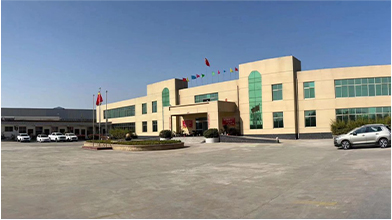Aug . 02, 2024 14:33 Back to list
Choosing the Best Materials for Durable and Effective Retaining Wall Foundations and Bases
High-Quality Retaining Wall Base Material A Key to Structural Integrity
Retaining walls serve a vital role in landscaping and civil engineering by providing support and managing soil erosion on sloped terrain. To ensure their effectiveness and longevity, it is paramount to use high-quality base materials. The base material forms the foundation upon which the wall is constructed, influencing both its structural integrity and longevity. This article will explore the significance of high-quality retaining wall base materials and the options available for builders and landscapers.
Importance of Base Material
The primary function of base material in a retaining wall system is to provide a stable foundation. When soil is excavated or graded for a retaining wall, the underlying ground may not always be suitable to bear the load of the wall, especially when it is subjected to lateral pressures from the soil it is retaining. High-quality base materials help distribute these stresses evenly, reducing the likelihood of wall failure or shifting over time.
In addition to load distribution, quality base materials provide drainage, which is crucial for preventing hydrostatic pressure buildup behind a wall. When water accumulates, it can dramatically increase the pressure on a retaining wall, leading to cracks, bowing, or even collapse. Therefore, a well-drained foundation prepared with quality materials is essential in maintaining the wall's integrity.
Recommended Base Materials
1. Granular Base Material One of the most widely recommended base materials is crushed stone or gravel, particularly angular gravel. This type of material allows for optimal drainage while providing a sturdy layer that minimizes shifting. Typically, a gravel layer of 6 to 12 inches deep is advised beneath the retaining wall.
2. Compactable Fill In some cases, compactable fill such as crushed limestone or limestone screenings may be employed. This type of material can be compacted to create a dense layer that offers excellent support and stability. However, it is crucial to ensure proper compaction to prevent settling over time.
3. Geotextile Fabrics Incorporating geotextile fabrics in conjunction with base materials can significantly enhance the drainage capability and soil stability. These permeable fabrics prevent the mixing of soil layers while allowing water to drain freely, thus maintaining the effectiveness of the base material.
high quality retaining wall base material

4. Concrete Base In cases where heavy loads are expected, a poured concrete base may be utilized. This durable option provides exceptional support and can be designed to include drainage channels, thereby enhancing the overall performance of the retaining wall structure.
Installation Tips
The success of a retaining wall is heavily reliant on how well the base material is installed. Here are some tips
- Excavation Begin with proper excavation to provide a level surface for the base. The depth should accommodate the thickness of the base material and the retaining wall.
- Layering It’s beneficial to layer the base material, compacting each layer thoroughly before adding the next. This technique prevents future settling and creates a solid foundation.
- Drainage Solutions Consider integrating drainage solutions, such as perforated pipes, behind the wall and within the base material to direct water away from the wall. This step is vital for maintaining pressure management and prolonging the wall’s lifespan.
Conclusion
In conclusion, investing in high-quality base materials for retaining walls is essential for achieving structural integrity and longevity. With various options available, including granular materials, compactable fills, geotextiles, and concrete bases, builders and landscapers can select the most appropriate materials based on their specific project needs. Proper installation and attention to drainage will further enhance the performance of the retaining wall, ensuring it withstands the test of time and environmental pressures.
-
Eco-Friendly Granule Covering Agent | Dust & Caking Control
NewsAug.06,2025
-
Fe-C Composite Pellets for BOF: High-Efficiency & Cost-Saving
NewsAug.05,2025
-
Premium Tundish Covering Agents Exporters | High Purity
NewsAug.04,2025
-
Fe-C Composite Pellets for BOF | Efficient & Economical
NewsAug.03,2025
-
Top Tundish Covering Agent Exporters | Premium Quality Solutions
NewsAug.02,2025
-
First Bauxite Exporters | AI-Optimized Supply
NewsAug.01,2025
